Japanese Zen Bedroom Design for Tranquility invites you to embrace the serene principles of Zen philosophy, creating a sanctuary of peace and harmony within your personal space. By incorporating elements of nature, simplicity, and mindful design, you can transform your bedroom into a haven of tranquility, promoting relaxation, and rejuvenation.
Delve into the world of Japanese Zen bedroom design, where minimalism meets functionality, and natural materials create a calming ambiance. Discover the secrets of creating a space that nurtures your well-being and inspires a sense of inner peace.
Principles of Japanese Zen Bedroom Design for Tranquility
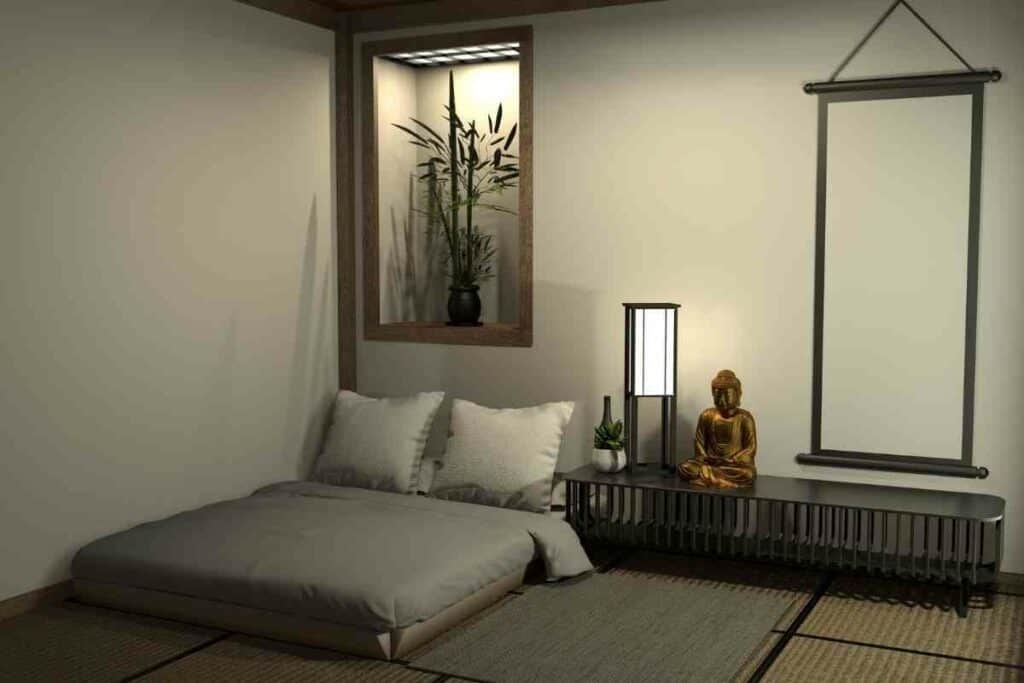
Japanese Zen bedroom design emphasizes tranquility and mindfulness, creating a space that promotes relaxation and inner peace. Rooted in the principles of “wabi-sabi,” it embraces simplicity, asymmetry, and natural materials to evoke a sense of serenity.
Wabi-Sabi: The Essence of Imperfection
Wabi-sabi is a Japanese aesthetic that celebrates the beauty of imperfection, impermanence, and simplicity. It values the patina of age, the irregularity of natural forms, and the subtle imperfections that make each object unique. In Zen bedroom design, wabi-sabi manifests as a preference for natural materials, such as wood, stone, and bamboo, that exhibit their natural grain and texture.
Simplicity: Uncluttered and Minimalistic
Simplicity is paramount in Japanese Zen bedroom design. The space is uncluttered, with only essential furnishings and decor. Each item is carefully chosen for its function and aesthetic appeal, creating a sense of spaciousness and tranquility. Colors are typically muted and earthy, such as beige, white, and gray, to evoke a sense of calm and serenity.
Asymmetry: Balancing the Irregular
Asymmetry is another key principle of Zen bedroom design. It involves arranging elements in an irregular and unbalanced manner, creating a sense of movement and dynamism. This can be achieved through the placement of furniture, artwork, and other decorative elements in unexpected or unconventional ways.
Asymmetry introduces a sense of interest and prevents the space from feeling static or predictable.
Natural Materials: Embracing the Organic
Natural materials play a vital role in creating a tranquil and inviting Zen bedroom. Wood is a popular choice for furniture, flooring, and walls, as its natural grain and texture bring warmth and organic beauty to the space. Stone and bamboo are also commonly used, adding a sense of solidity and connection to nature.
These materials create a calming and grounding atmosphere, fostering a sense of well-being and tranquility.
Incorporating Zen Principles into Your Bedroom Design
- Choose furniture and decor with simple lines and natural materials.
- Declutter your space and remove unnecessary items.
- Use muted and earthy colors to create a sense of calm.
- Arrange elements in an asymmetrical manner to introduce movement and interest.
- Incorporate natural elements, such as plants, water features, or natural light, to create a connection to the outdoors.
Color Palette and Lighting for a Zen Bedroom: Japanese Zen Bedroom Design For Tranquility
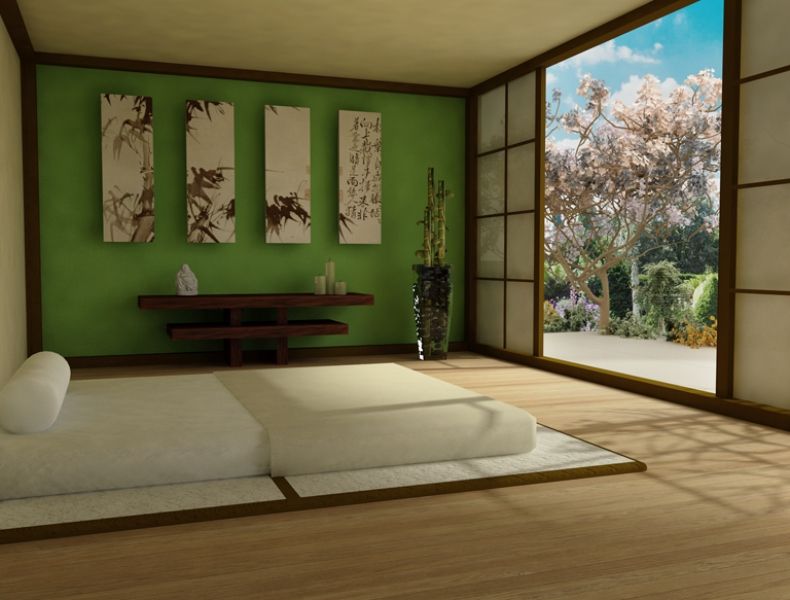
Creating a tranquil Zen bedroom requires careful consideration of color and lighting. A calming color palette, ample natural light, and soft, diffused lighting contribute significantly to fostering a peaceful and serene atmosphere.
Color Palette
Zen-inspired color palettes typically feature neutral and earthy tones that evoke a sense of calm and tranquility. Soft shades of beige, cream, gray, and white create a soothing backdrop for the bedroom. Natural greens, blues, and browns bring a touch of nature indoors, fostering a connection with the outdoors.
Natural Light
Maximize the use of natural light by positioning your bed near a window or skylight. Natural light has mood-boosting effects and helps regulate sleep-wake cycles. Keep curtains or blinds sheer to allow ample sunlight to filter through while maintaining privacy.
Soft, Diffused Lighting
Artificial lighting should be soft and diffused to avoid harsh shadows and glare. Use dimmable lights or install light diffusers to create a gentle, ambient glow. Consider using lamps with warm-toned bulbs to promote relaxation and reduce eye strain.
Furniture and Decor for a Zen Bedroom
Creating a serene and tranquil Zen bedroom involves selecting furniture and decor that complements the principles of simplicity, natural materials, and functionality. Essential furniture pieces include a low bed frame, tatami mats, and a meditation cushion or bench.
Essential Furniture Pieces
- Low Bed Frame:A low bed frame brings you closer to the ground, promoting a sense of grounding and connection with nature. Choose a frame made from natural materials like wood or bamboo.
- Tatami Mats:Tatami mats are traditional Japanese flooring made from woven rush grass. They provide a comfortable and insulating surface, adding warmth and texture to the room.
- Meditation Cushion or Bench:A meditation cushion or bench provides a dedicated space for meditation and relaxation. Choose a cushion or bench with a firm yet comfortable surface that supports your posture.
Importance of Natural Materials
Natural materials, such as wood, bamboo, stone, and cotton, are essential for creating a Zen bedroom. These materials bring a sense of warmth, organic beauty, and connection with nature. Avoid synthetic materials, as they can disrupt the serene atmosphere.
Traditional and Modern Zen-Inspired Decor
- Traditional Zen Decor:Incorporate traditional Japanese elements such as shoji screens, paper lanterns, and calligraphy scrolls to create a timeless and authentic Zen ambiance.
- Modern Zen Decor:Modern Zen decor combines traditional elements with contemporary designs. Think minimalist furniture with clean lines, natural materials, and neutral colors.
Plants and Nature in a Zen Bedroom
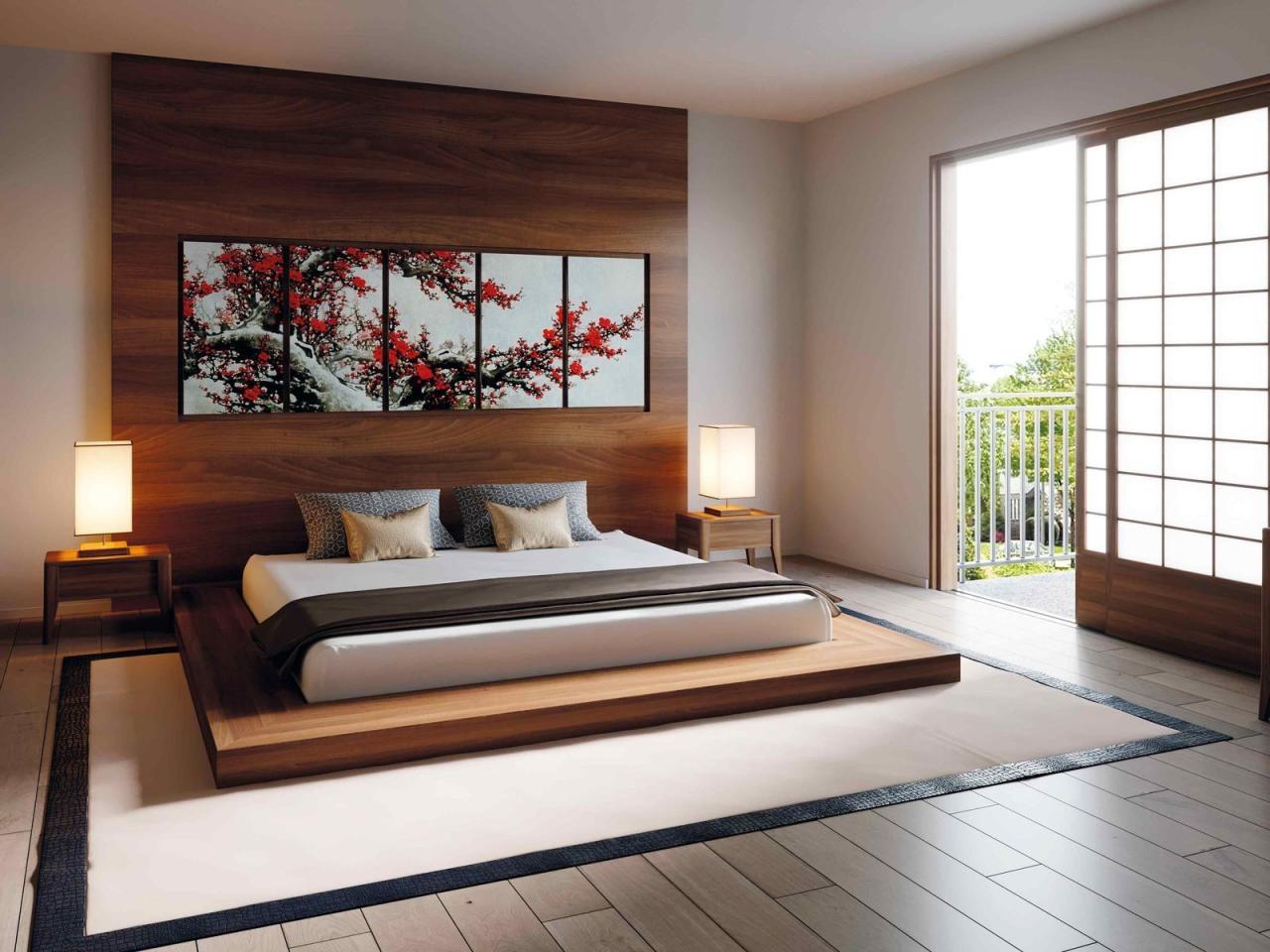
Incorporating plants into a Zen bedroom brings numerous benefits. They purify the air, reducing stress and improving sleep quality. Plants also create a connection with nature, fostering a sense of tranquility and balance.
Suitable Plants for a Zen Bedroom
Choose plants that are easy to care for and have air-purifying qualities, such as:
- Peace lily: Removes toxins like formaldehyde and benzene.
- Snake plant: Releases oxygen at night, improving sleep.
- Spider plant: Purifies air and removes toxins.
- ZZ plant: Tolerates low light and drought conditions.
- Pothos: Easy to grow and purifies air.
Creating a Connection with Nature
Beyond plants, incorporate natural elements to enhance the connection with nature:
- Use natural materials like wood, bamboo, or stone.
- Add a water feature, such as a fountain or aquarium.
- Incorporate natural light with large windows or skylights.
- Use natural colors and textures to mimic the outdoors.
Layout and Organization for a Zen Bedroom
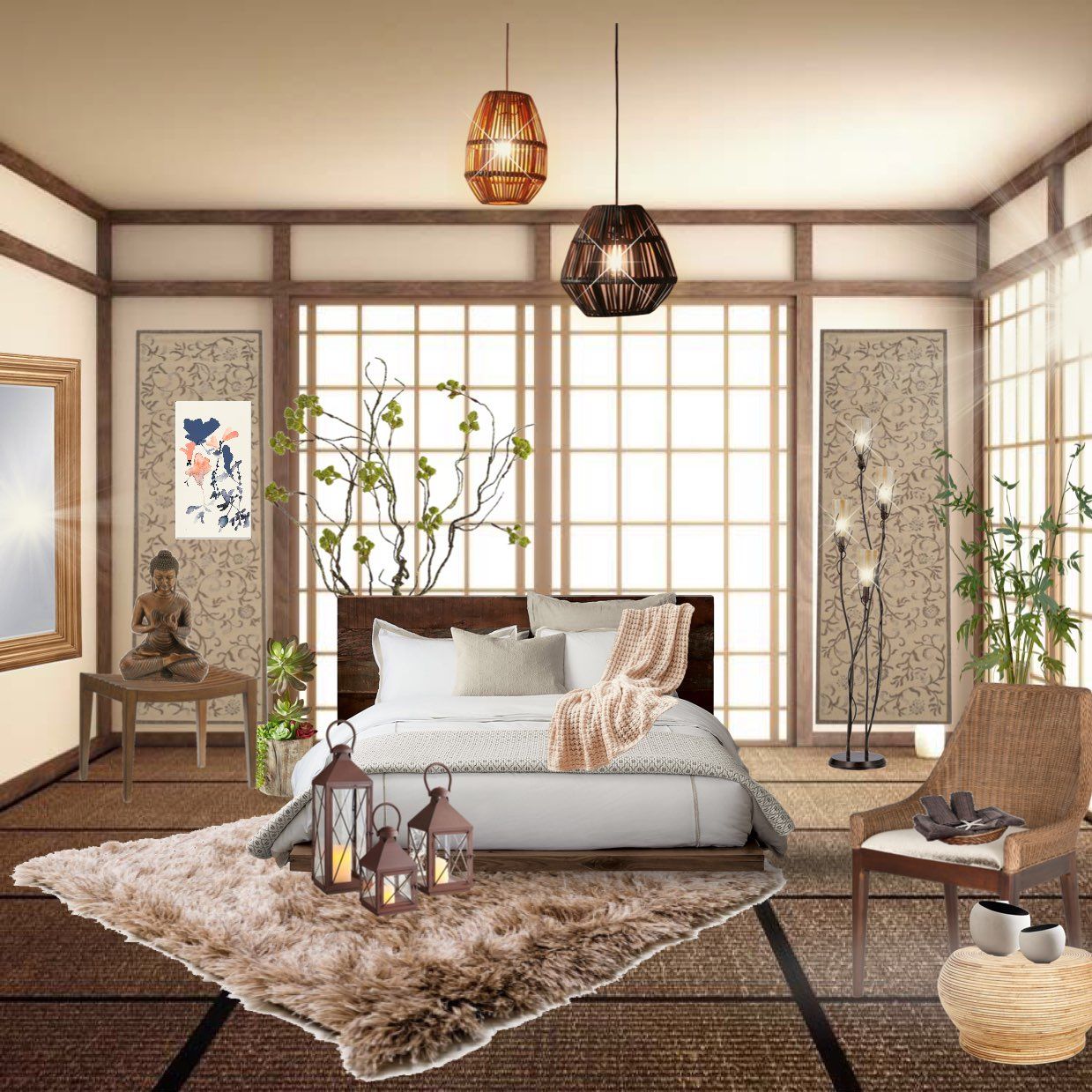
Creating a Zen bedroom is all about creating a space that is both calming and inviting. The layout and organization of your bedroom play a big role in achieving this goal.One of the key principles of feng shui is the concept of flow.
The minimalist aesthetic of Japanese Zen bedroom design fosters a sense of tranquility and inner peace. Its simple lines and neutral tones create a serene atmosphere, while its emphasis on natural materials like wood and bamboo brings a touch of the outdoors in.
For those who crave a more eclectic and bohemian vibe, Boho Bungalow: Laid-Back Living with Bohemian Style offers an inspiring blend of ethnic patterns, vibrant colors, and cozy textiles. Yet, when the day is done, the calming essence of Japanese Zen bedroom design remains an ideal retreat for unwinding and restoring balance.
Feng shui believes that energy should be able to flow freely through a space in order to create a sense of balance and harmony. When it comes to your bedroom, this means avoiding any obstacles that could block the flow of energy, such as large pieces of furniture or clutter.Another
important principle of feng shui is the concept of balance. This means creating a space that is visually balanced, with no one area being too heavy or too light. You can achieve balance by using similar colors and textures throughout the room, and by placing furniture in a way that creates a sense of symmetry.Decluttering
is also an important part of creating a Zen bedroom. Clutter can create a sense of chaos and overwhelm, which can make it difficult to relax and unwind. Take some time to declutter your bedroom and get rid of anything you don’t need.
This will help to create a more peaceful and inviting space.
Creating a Sense of Flow
* Avoid placing large pieces of furniture in the middle of the room.
- Keep pathways clear and free of obstacles.
- Use rugs to define different areas of the room and create a sense of flow.
- Hang curtains or blinds to soften the light and create a more inviting atmosphere.
Creating a Sense of Balance, Japanese Zen Bedroom Design for Tranquility
* Use similar colors and textures throughout the room.
- Place furniture in a way that creates a sense of symmetry.
- Avoid using too much furniture or accessories.
- Keep the room clean and uncluttered.
Decluttering
* Get rid of anything you don’t need.
- Donate or sell items you no longer use.
- Keep only the items that you love and that make you happy.
- Regularly declutter your bedroom to keep it feeling fresh and inviting.
Last Point
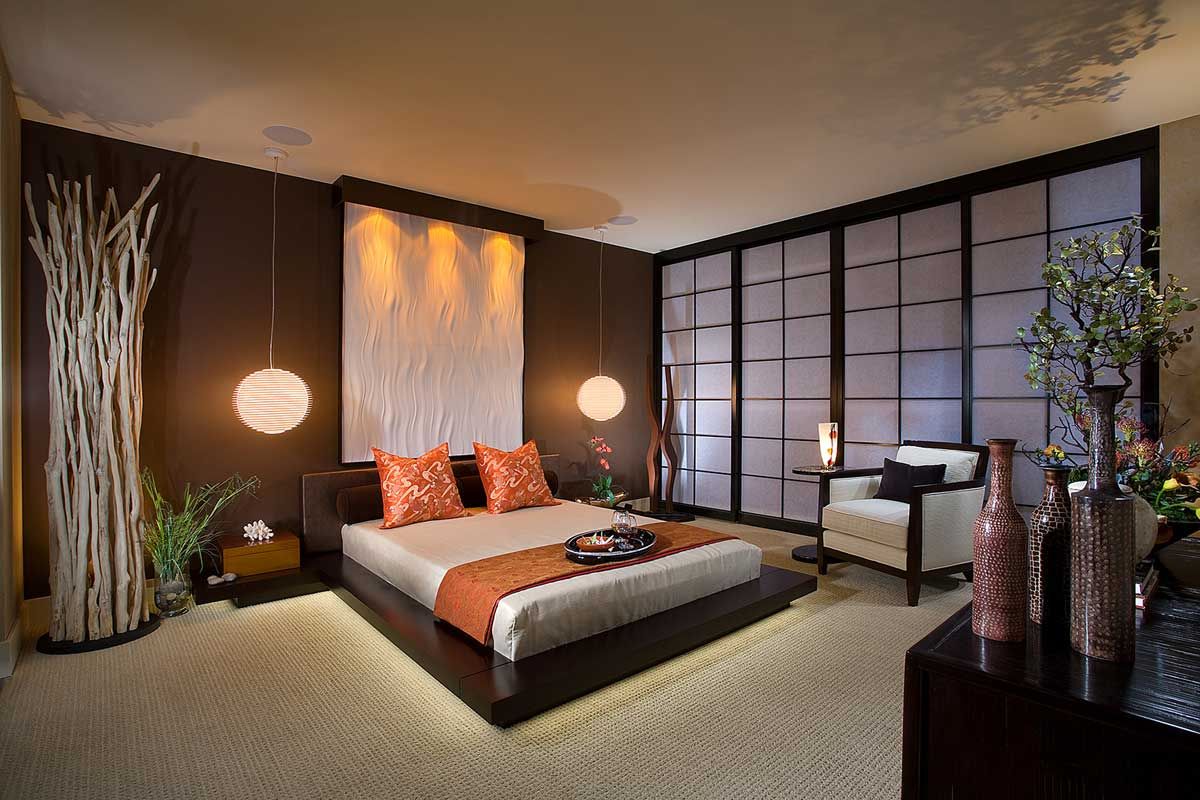
As you embark on this journey of creating a Japanese Zen bedroom, remember that the true essence lies in embracing the principles of simplicity, natural beauty, and mindful living. By incorporating these elements into your design, you will cultivate a space that not only invites tranquility but also fosters a deeper connection with yourself and the world around you.
Questions and Answers
What is the key concept behind Japanese Zen bedroom design?
The key concept of Japanese Zen bedroom design is to create a space that promotes tranquility and mindfulness, fostering a sense of inner peace and relaxation.
How can I incorporate the principles of “wabi-sabi” into my Zen bedroom design?
“Wabi-sabi” embraces the beauty of imperfection and impermanence. Incorporate natural materials with unique textures and patinas, and appreciate the asymmetry and simplicity of forms.
What are some tips for creating a calming color palette for a Zen bedroom?
Opt for a neutral color palette with soft, earthy tones such as beige, gray, white, and light greens. These colors evoke a sense of serenity and tranquility.
How can I use plants to enhance the tranquility of my Zen bedroom?
Incorporate plants that purify the air and add a touch of nature to your bedroom. Choose plants like peace lilies, snake plants, or bamboo, which are known for their calming effects.

1 comment